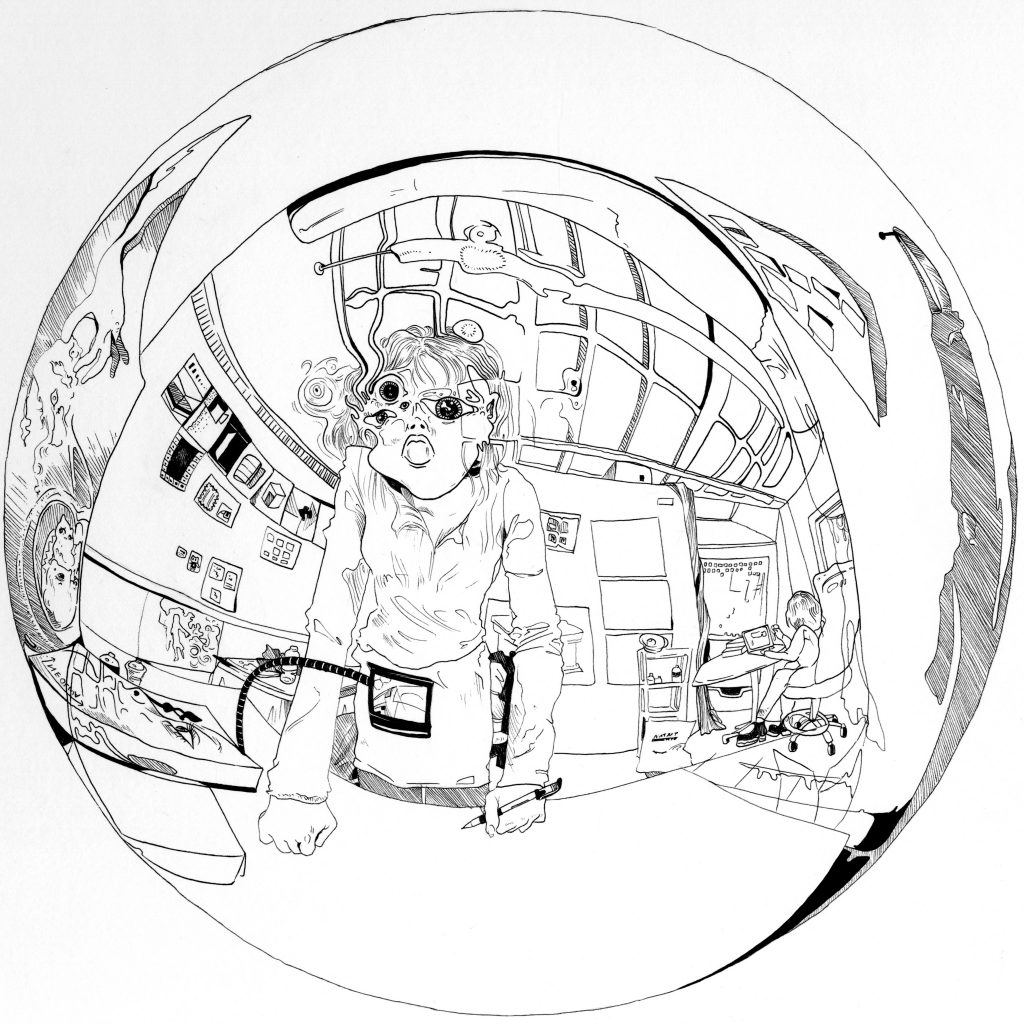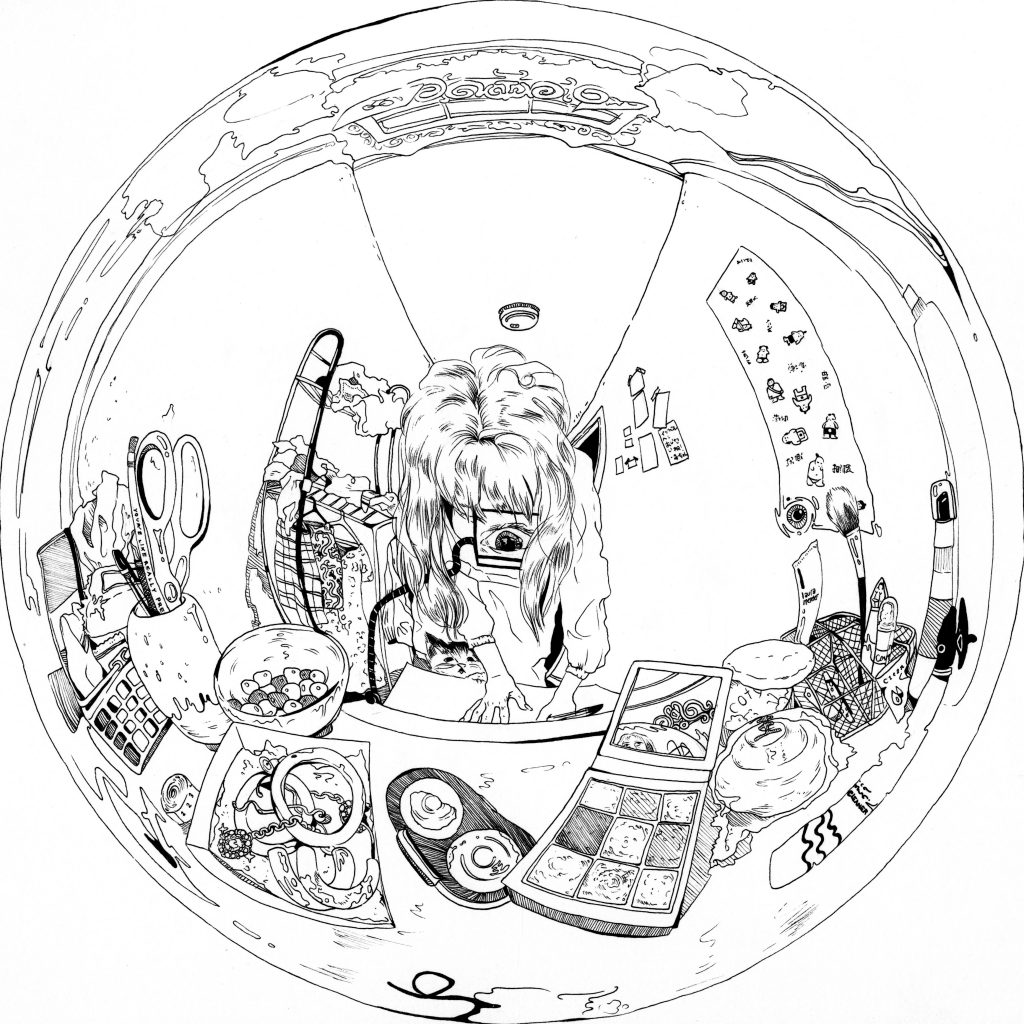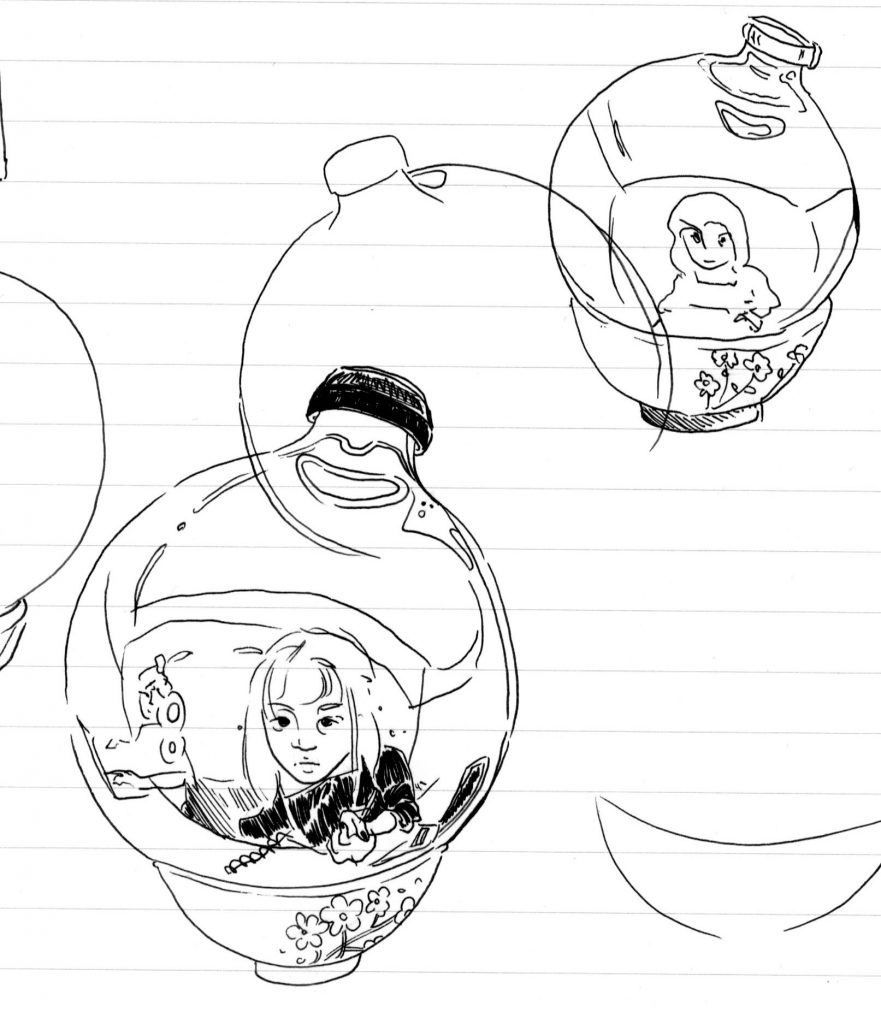A completely self-centered world emerges from a mirrored sphere. You cannot escape the center of the orb.



Cognitive neuroscience researchers studying spatial cognition have identified two frames of reference that humans use to understand space: allocentric (world-based) and egocentric (self-based.) These drawings depict the ultimate egocentric frame of reference: a spherified world emanating from the viewer at its center.
I used the NeoLucida portable camera lucida to project the contents of a mirrored sphere onto paper. I traced the projection in pencil to capture the rough location and distortion of objects in the world. Then, I inked in the sketch freehand, filling in details as I had seen them in the camera lucida and the photographs I took through it.
Objects perpendicular to my gaze (i.e. to the side of the orb) became stretched beyond recognition. Even small things, like the bottle in the third image, were spaghettified, as if the image were an inverse black hole. Some objects, no matter how hard I looked, were simply unidentifiable. Dents and other imperfections of the orb distorted the image, creating miniature whorls and spirals throughout the scene.

I wanted to see how different environments would appear in the orb, and how it would distort the human form into something unnerving yet familiar. Golan pointed out the unintuitive (at least to me) fact that one’s vantage point (eye or camera lucida) will always be located at the exact center of the sphere. This is oppressive, but unfortunately cannot be stopped.
Pathological mental states like anxiety separate the brain user from their environment, creating a whirlpool of self-centered obsessions and paranoias. Sometimes, one’s own brain is the only thing that doesn’t feel distorted and unfamiliar, when in fact it is more beneficial for the self to open up and bleed into the environment. The second image shows how sheer force of will allowed me to escape the reverse singularity of the orb. Unfortunately, my facial features did not stay intact and it was somewhat painful.

If I were to do this project again, I’d have a more methodical setup from the start. I’d also develop a more portable/generalizable and less opportunistic rig, although clipping the camera lucida to whatever was available in the environment did help immerse it into the scene. Each drawing was relatively time-consuming, but I would love to make some more.